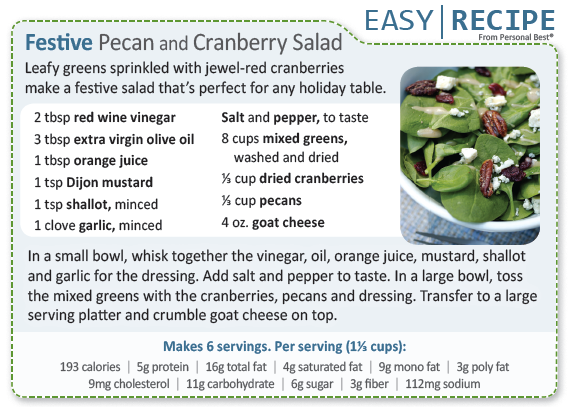
Category Archives: Think Before You Eat
Hold the Line – “bing/bulge” Control
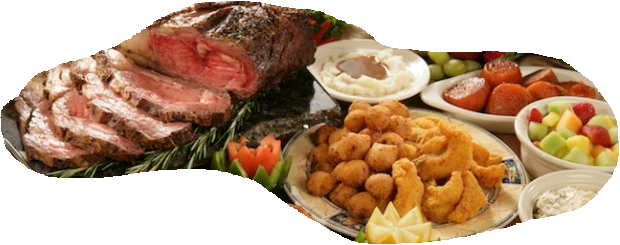 Turn away from the buffet. Move as far away from the buffet as you can. One study on buffet eating behaviors observed that diners with higher BMIs were more likely to sit facing the buffet, use larger plates, and pile the food on before seeing all the dish options. You might want to grab a napkin, too. Diners with lower BMIs placed napkins in their laps, used smaller plates, chewed their food more per bite, perused the offerings prior to serving, and did not sit near or face the buffet (3).
Turn away from the buffet. Move as far away from the buffet as you can. One study on buffet eating behaviors observed that diners with higher BMIs were more likely to sit facing the buffet, use larger plates, and pile the food on before seeing all the dish options. You might want to grab a napkin, too. Diners with lower BMIs placed napkins in their laps, used smaller plates, chewed their food more per bite, perused the offerings prior to serving, and did not sit near or face the buffet (3).
Think before you drink. Holiday beverages can contain an obscenely excessive amount of calories–with or without the alcohol. A cup of eggnog can deliver 350 calories, a creamy White Russian has 260 calories, while a medium pumpkin spice latte will set you back 380 spicy calories. Lower calorie choices include a flute of champagne at 90 calories or wine spritzers–a diluted sparkling water and fruit mixture, even a “skinny” peppermint mocha comes in at 130 steaming calories. And as a reminder, alcohol can also interfere with proper nutrition, recuperative sleep, hydration levels, muscle recovery, stress hormone levels, and the immune system.
Snug in their beds. Sleep is important for adults, eight good hours a night is typically recommended. Getting enough sleep helps control weight, keeps the immune system functioning optimally, reduces feelings of stress and stress-related illnesses, and helps put you in a better mood.
Bento Box Lunch
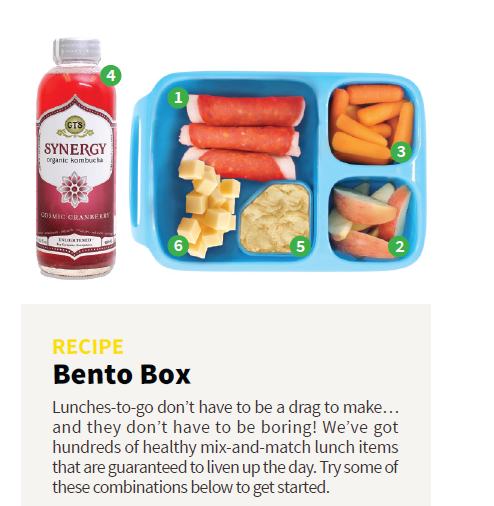
1 = Protein: (pepperoni/turkey roll-up), tuna salad, hardboiled egg
2=Fruits: apple slices, grapes, strawberries
3=Vegetables: carrots, celery, cucumber
4=Fermented Foods: kombucha, yogurt, kraut
5=Nuts, Seeds, Beans and Grains: hummus, almonds, pistachios
6=Healthy Fats: cheddar cheese, avocado, sweet potato chips cooked in coconut oil
Green Bean Delivery Issue 7/September 2016
Healthier Ways to Prepare Food (frying substitutes)

Instead of frying foods – which adds unnecessary fats and calories – use cooking methods that add little or no fat, like these:
- Stir-frying. Use a wok to cook vegetables, poultry or seafood in vegetable stock, wine or a small amount of oil. Avoid high-sodium (salt) seasonings like teriyaki and soy sauce.
- Roasting. Use a rack in the pan so the meat or poultry doesn’t sit in its own fat drippings. Instead of basting with pan drippings, use fat-free liquids like wine, tomato juice or lemon juice. When making gravy from the drippings, chill first then use a gravy strainer or skim ladle to remove the fat.
- Grilling and broiling. Use a rack so the fat drips away from the food.
- Baking. Bake foods in covered cookware with a little extra liquid.
- Poaching. Cook chicken or fish by immersing it in simmering liquid.
- Sautéing. Use a pan made with nonstick metal or a coated, nonstick surface, so you will need to use little or no oil when cooking. Use a nonstick vegetable spray to brown or sauté foods; or, as an alternative, use a small amount of broth or wine, or a tiny bit of vegetable oil rubbed onto the pan with a paper towel.
- Steaming. Steam vegetables in a basket over simmering water. They’ll retain more flavors and won’t need any salt.
Brown Rice Bowls
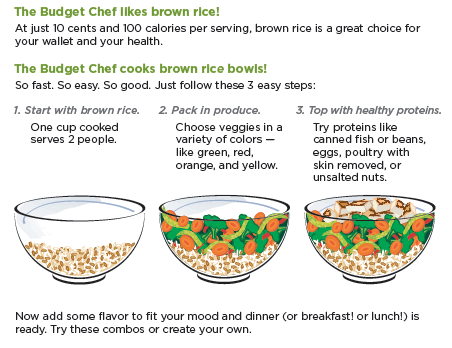
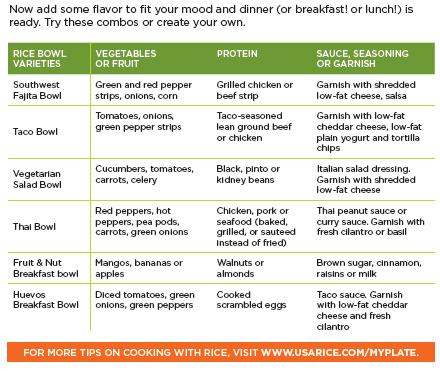
Something a Little “Fishy”
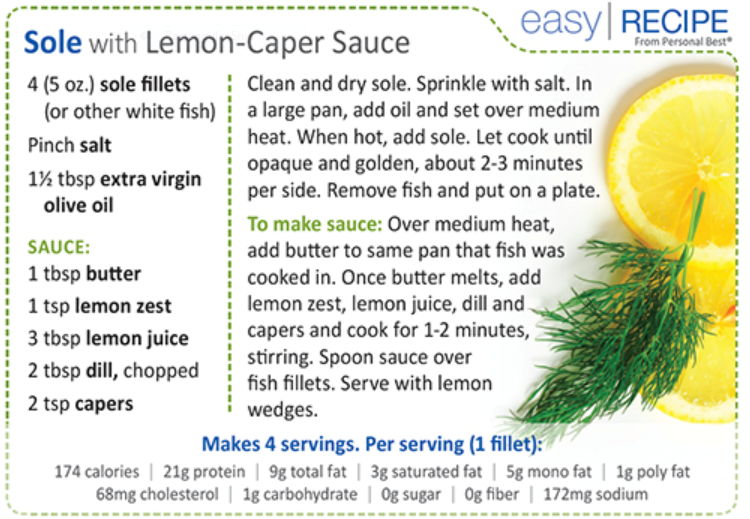
Four Fall Foods For Your Family
Fall means new classes, new activities and sports, new schedules and a shift to colder weather foods. Regardless of age, having the right fuel — even better if it comes from produce that’s at its peak — is key to helping kids do their best.
Pumpkin
Is anything more fall-like than a pumpkin? These famously orange winter squashes are chock-full of vitamin A and deliver 3 grams of fiber per ½-cup serving, plus potassium. And don’t forget about roasting the seeds! Pumpkin seeds are a good source of several nutrients, including zinc, which is essential for many body processes including immune function.Try pumpkin puree mixed into mac-and-cheese or with hummus for a seasonal spread. Looking for more options? Lisa Brown, MS, RDN, CDN, a registered dietitian in New York City, suggests adding it to pancake batter, oatmeal, smoothies or your kid’s favorite chili.
Oats
Heart-healthy oats are loaded with fiber for slow-burning energy. Oats also provide vitamin B6 and other nutrients that are important for growth and development and overall health.
“A steaming bowl of oatmeal is the perfect breakfast on a cold day,” Brown says. “The soluble fiber will help control blood sugar levels and keep your kids full until lunchtime. Top their oatmeal with nuts or nut butters, and fruit for extra vitamins, minerals and antioxidants.” Or, replace the breadcrumbs in your favorite meatloaf recipe with oatmeal.
Apples
Apples pack a powerful nutrition punch. No wonder they sit on teachers’ desks and keep the doctor away. They are a good source vitamin C. Leave the skin on for added fiber.
Slice and sprinkle apple slices with cinnamon or pair with cheese or peanut butter for an easy snack. Don’t forget about dinner! Apples also taste great when stewed and served with savory foods such as roasted pork.
Brussels Sprouts
They may be small, but Brussels sprouts are part of the powerhouse cruciferous veggie family. In each 1 cup serving, they provide 4 grams of fiber, plus vitamins A, C and K. Brussels sprouts are also a source of calcium, folate, iron and zinc. They even have some protein.
You can cut whole Brussels sprouts into kid-friendly quarters and toss with sea salt and olive oil. Roast until crispy and you’ve got a tasty alternative to french fries. If your kids are skeptical, serve the sprouts mixed with roasted sweet potato or butternut squash cubes. You can also shred them (or buy them pre-shredded) and sauté lightly then toss into your kids’ favorite pasta or rice dish.
Chicken Tikka Pita (8 year old contest winner)
Gallery
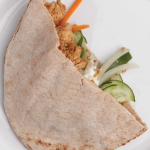
This gallery contains 2 photos.
(Indiana 8 year old contest winner in the 2016 White House State Dinner Cookbook Recipe competition) • 592 calories • 21g fat • 47g carbohydrates • 56g protein INGREDIENTS for the Chicken Tikka: 1 pound chicken breast, boneless, skinless, cubed … Continue reading
Healthy Eating…conversation starters!
Healthy Eating: Conversation starters ![]()
Sometimes a family member or friend needs encouragement to make a healthy change. Try these tips to start a conversation about eating healthy.
Say why eating healthy is important.
- “Your health is important to me. I care about you and want you to live a healthy life.”
- “A healthy diet can help protect you from high blood pressure, diabetes, heart disease, bone loss, and some types of cancer.”
Talk about small steps.
- “Little changes – like drinking water instead of regular soda, and eating more vegetables and fruits – can make a difference in your health.”
- “How about replacing regular cheese with low-fat cheese in your favorite recipes?”
- “Try eating fresh fruit – or fruit canned in 100% juice – for dessert instead of sweets.”
Take the lead. Do it together.
- “There are simple things we can do, like trying oatmeal or whole-grain cereal for breakfast.”
- “Let’s go grocery shopping together for healthy foods.”
- “Let’s try to cook and enjoy a healthy meal together at least twice a week.”
- “Let’s try eating at least 2 vegetables with dinner.”
- “Next time we go out to eat, let’s share a meal. Or we can each order our own, but only eat half. We’ll save the other half for lunch the next day.”
Offer to help.
- “How can I help you eat healthy?”
- “What is the hardest thing about eating healthy? What can I do to support you?”
Nutritional Needs for Osteoporosis Prevention
How can I prevent weak bones?
The best way to prevent weak bones is to work on building strong ones. No matter how old you are, it is never too late to start. Building strong bones during childhood and the teen years is one of the best ways to keep from getting osteoporosis later. As you get older, your bones don’t make new bone fast enough to keep up with the bone loss. For females, after menopause, bone loss happens more quickly. But there are steps you can take to slow the natural bone loss with aging and to prevent your bones from becoming weak and brittle.
Bones contain a lot of calcium. It is important to get enough calcium in your diet. You can get calcium through foods and/or calcium pills, which you can get at the grocery store or drug store. Getting calcium through food is definitely better since the food provides other nutrients that keep you healthy. Talk with your doctor or nurse before taking calcium pills to see which kind is best for you. Taking more calcium pills than recommended doesn’t improve your bone health. So, try to reach these goals through a combination of food and supplements. Here’s how much calcium you need each day.
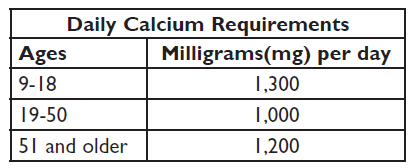

The calcium amounts of these foods are taken from the United States Department of Agriculture’s Dietary Guidelines for Americans.
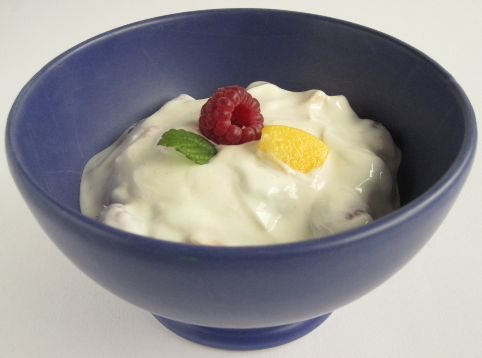
For More Information on osteoporosis prevention please reference:
http://womenshealth.gov/publications/our-publications/fact-sheet/osteoporosis.pdf

